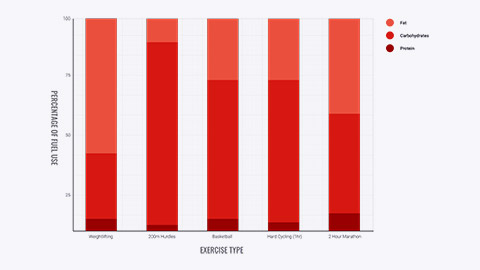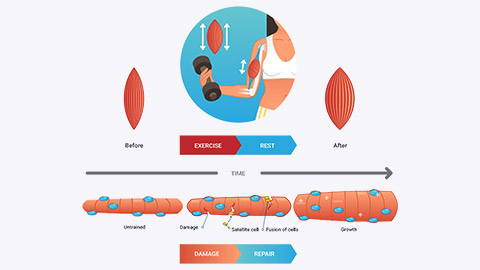In this topic, we focus on the importance of nutrition and the impact of physical activity. You will learn:
- about using nutrition as fuel
- nutrition for training and refuelling including when, what, and how much to eat
- advantages of being fit

Nutrition provides the human body with nutrients for overall wellbeing. Food acts as the fuel that is utilised for energy throughout the day. When it comes to fuel, the body is like any other machine. It needs the appropriate fuel to function and carry out the task at hand. To optimise and improve performance:
- Give it the right fuel (adequate food sources)
- Provide it with proper maintenance (keep it moving and get regular health check-ups)
- Regularly test its physical capabilities (keep active and challenged with physical activities)
The following elements are key:
- The body must have adequate food consumed for the activity being performed, ensuring there are optimal muscle glycogen and full liver glycogen stores to be used for energy through training.
- Stay hydrated throughout the day and during physical activity.
- Regularly challenge the body through exercise to prompt a change.
- Ensure ample time for the body to rest and complete recovery of the worked-out muscles.
When working with clients and discussing nutritional aspects to support their training, it is important to have a solid grasp of:
- Body composition
- Goals
- Intensity and duration of exercise
- Frequency
- Nutrients available
With that in mind, let’s look further into eating for performance.
Fuel utilisation
Carbohydrates, fats, and proteins all provide the body with energy for exercise. Carbohydrates and fats provide the majority of energy, with protein as a repair type fuel. The higher the intensity of the exercise, the greater the fuel supply made from carbohydrates to meet the increased demands. When carbohydrate levels run low, the body turns to other sources of fuel including fats but also proteins.
Typically, their order of service is:
- Carbohydrate
- Fat
- Protein
Carbohydrate stores are of extreme importance to all athletes as this fuel source is the most readily available and provides a greater quantity of energy.
Fat, along with carbohydrates, is typically the main energy source called upon during training. Fat is stored in the adipose tissue within the body, so it is not readily available. The body has to metabolise it into a transportable form and then transport it from the adipose cells and into the contracting muscle cells before it can be utilised as a fuel source.
Fat as a fuel source is desirable for many people, but using protein in significant amounts is not. When an intense activity is performed with low glycogen stores, protein can contribute up to 15% of energy. It is important to be aware that protein never plays the lead role in energy provision, as even a small increase over the usual contribution can have harmful effects over time.
The following diagram approximates the usage of the 3 different fuel sources during different exercise types and intensities.

Why are carbohydrates so important for exercise?
A common thought is that once carbohydrates run out while exercising, the body turns to fat as fuel. While there is truth to this statement, it is important to be aware that the fuel used ultimately depends on what is available in the system.
Generally speaking, because our body already obtains plenty of fat, the pre-exercise meal doesn’t require much, if any, fat. This would mean that the fat used as energy is the fat that is already stored in the body. Being mindful that the body does not use much protein during exercise, there shouldn’t be a focus on protein in the pre-exercise meal either. This leaves carbohydrates as the first access to energy to be used by the body for exercise.
Carbohydrates should be the majority of the nutrients eaten in a pre-exercise meal. The amount and type of carbohydrates will be dependent on the duration and intensity of the session (e.g., 30 min jog vs half marathon) and the time available before the session to digest and absorb the food (complex CHO vs simple CHO).
What is the role of protein when fuelling for exercise?

Every time a muscle is used against a force, it causes damage through micro-tears. This process is referred to as the ‘tear and repair theory’. For a muscle to grow, it is ‘damaged’ by training and then, during the healing process, it repairs to a bigger and stronger version than before training. The volume of repair is relative to the intensity of training performed. The body uses protein as a fuel source to repair the damage and build a little extra protection against future stress. This can be seen physically as muscle growth.
If protein is used as a fuel source for other metabolic processes, there will be a risk of insufficient protein levels available for damage repair and growth.
Long-distance runners stress their muscles continuously, even long after their glycogen stores are depleted. Serious runners understand this and include high amounts of protein in their diets to try and offset losses. This is why it is important to have a thorough understanding of the client's goals.
Watch
The following video provides an engaging summary of the process of muscle growth via the tear and repair theory and the role of protein.
